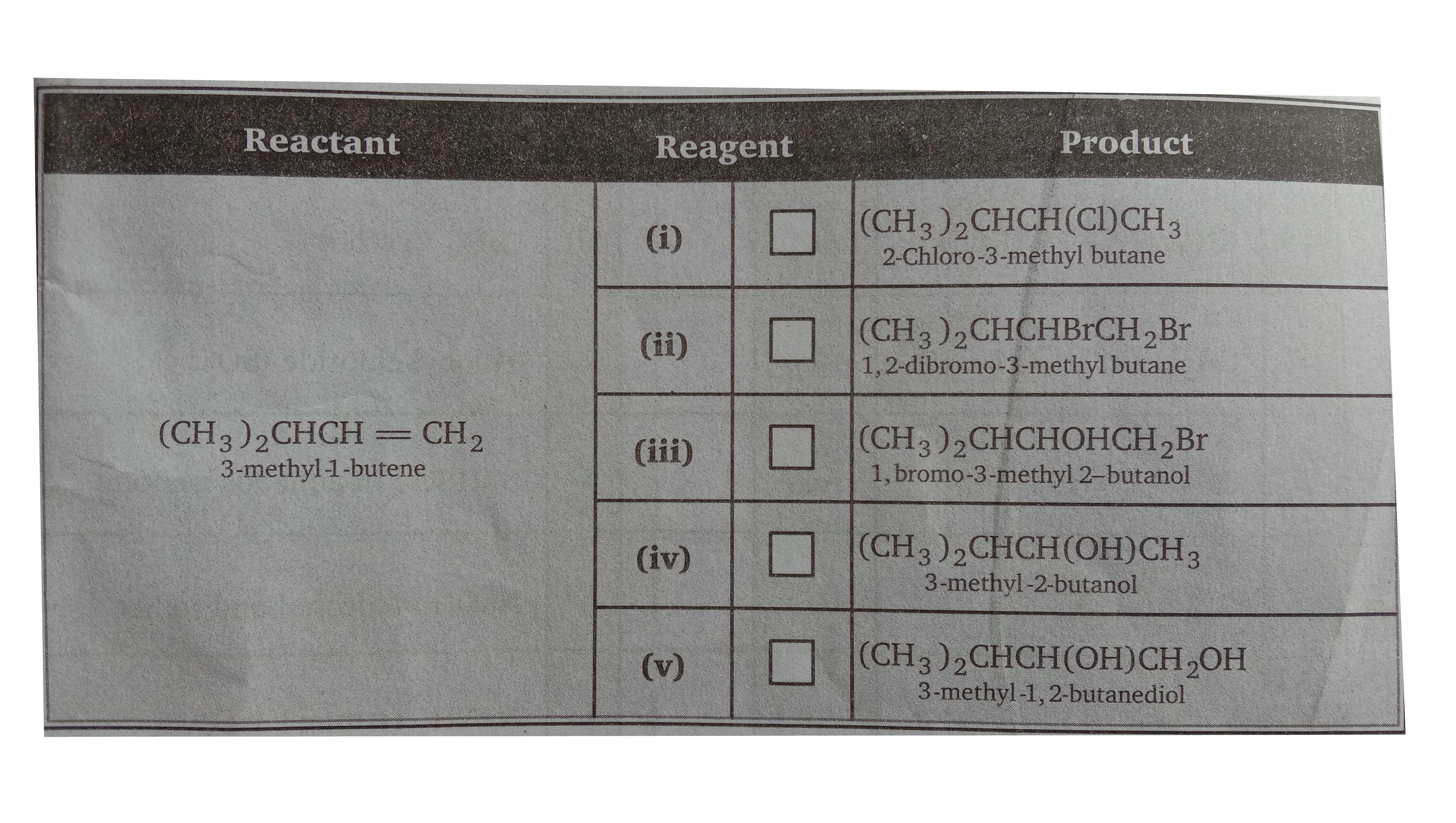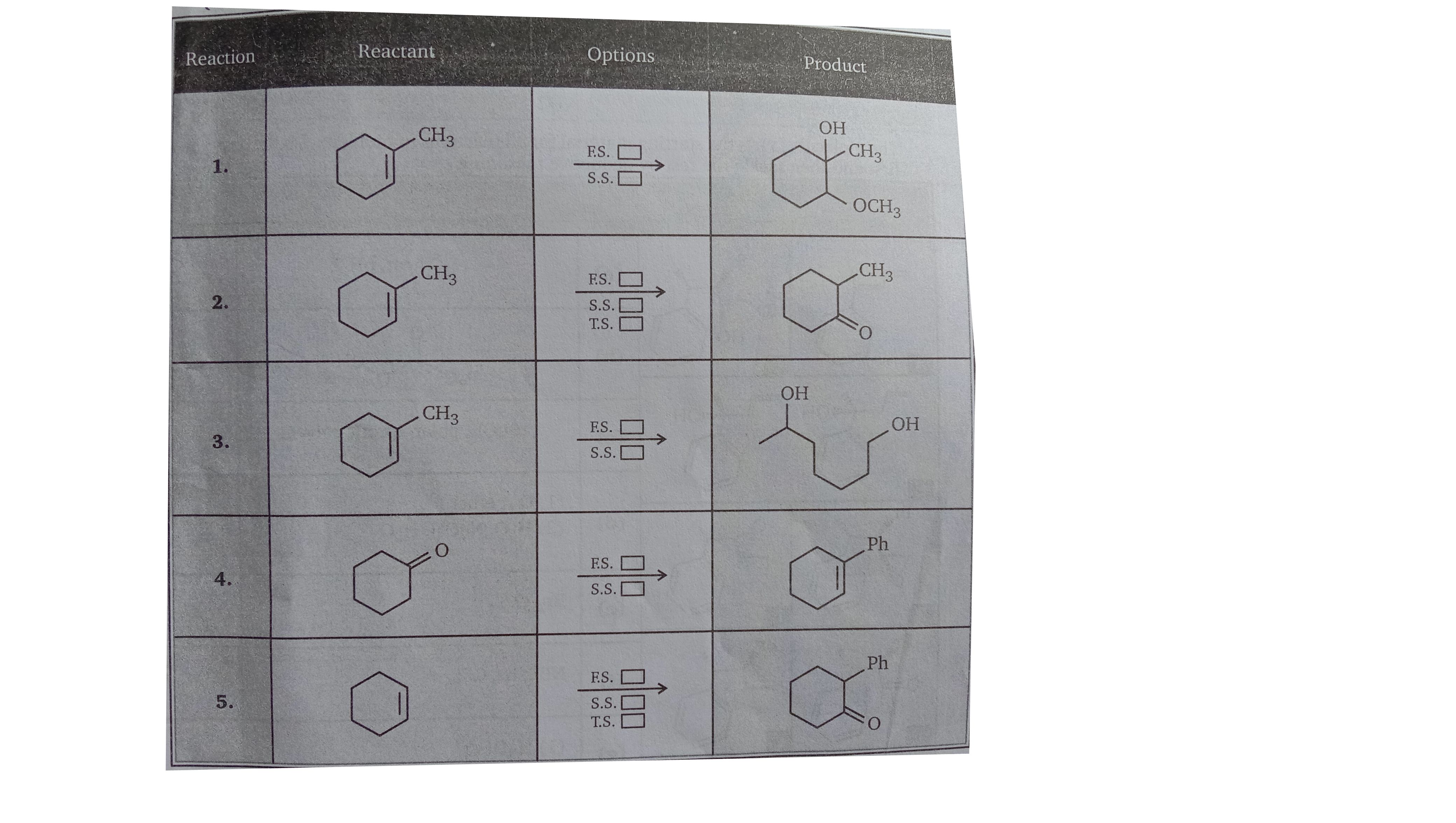Isobutyl alcohol (2-methyl-1-propanol) , can be transformed to each of the compounds (a through 1) listed in the left-hand column. In each case the number of steps needed to accomplish the change is noted, and an answer box is provided for your reagent Write letters designating the reagent or reagents you believe will achieve the desired transformation in the box to the right of the product formula. In the case of a multi-step sequence write the reagents in the order they are to be used. In some cases you maywish to use a previously prepared compound as a reactant. If so, write the number (a to 1) corresponding to the desired compound.

The correct Answer is:a - B; b - I; c - F; d - G; e - I, H or 2 H; f - B, E or 1, E; g - J; h - G, Nor 4N i - N, j - I, A, C or 2AC or ILD or 2LD; k - B, K, D or 1KD; 1-B, E, D or lED or 6D
Basic information of organic reaction.
Similar Questions
Isobuty alcohol (2 -mehyl 1 -1-propanol), (CH3)2CHCH2OH, can be transformed to each of the compounds (a through 1) listed in the left-hand column. In each case the number of steps the needed to accomplish the change is noted, and an answer box is noted, and answer box is provided for your reagent selections. Fourteen reagents (designated A through N) are listen in the right -hand column. corresponding to the desired compound.
Write letters desiganating the raagent or reagents you believe will achieve the desired transformation in the box to the right of the product formula. In the case of a multi-step sequence write the reagents in the order they are to be used. In some cases you may wish to use a previously prepared compound as a reactant. If so, write the number (a to 1) corresponding to the desired compound.
View SolutionPropene (CH3−CH=CH2) can be transformed to compounds (a to j) listed in the left-hand column.
Write letter designating the reagent, you believe desired transformation. In the case of multi-step sequence write the reagent in the order they are to be used.


View Solution
Knowledge Check
R−CH2−CH2OH can be converted into RCH2CH2COOH . The correct sequence of reagent is :
APBr3,KCN,H+BPBr3,KCN,H2CKCN,H+DHCN,PBr3,H+Propene, CH3−CH=CH2, can be converted to 1-propanol by oxidation. Which set of reagents among the following is ideal to effect the conversion?
AAlkaline KMnO4BB2H6 and alkaline H2O2CO3/Zn dustDOsO4/NaHSO3Propene, CH3−CH=CH2, can be converted to 1-propanol by oxidation. Which set of reagents among the following is ideal to effect the conversion?
AAlkaline KMnO4BB2H6 and alkaline H2O2CO3/Zn dustDOsO4/CH4,Cl2
 In each reagent box write a letter designating the best reagent and condition selected from the above list of reagents.
In each reagent box write a letter designating the best reagent and condition selected from the above list of reagents.

View SolutionIn each reaction box write a single letter designating the best reagent and condition selected from the list at bottom of the page.


View SolutionWrite the best reagents above each reaction arrow. If the transformation cannot be achieved in a single step by any reagents, write "NR"

View SolutionWrite the best reagents above each reaction arrow. If the transformation cannot be achieved in a single step by any reagents, write "NR"

View SolutionWrite the best reagents above each reaction arrow. If the transformation cannot be achieved in a single step by any reagents, write "NR"

View Solution
